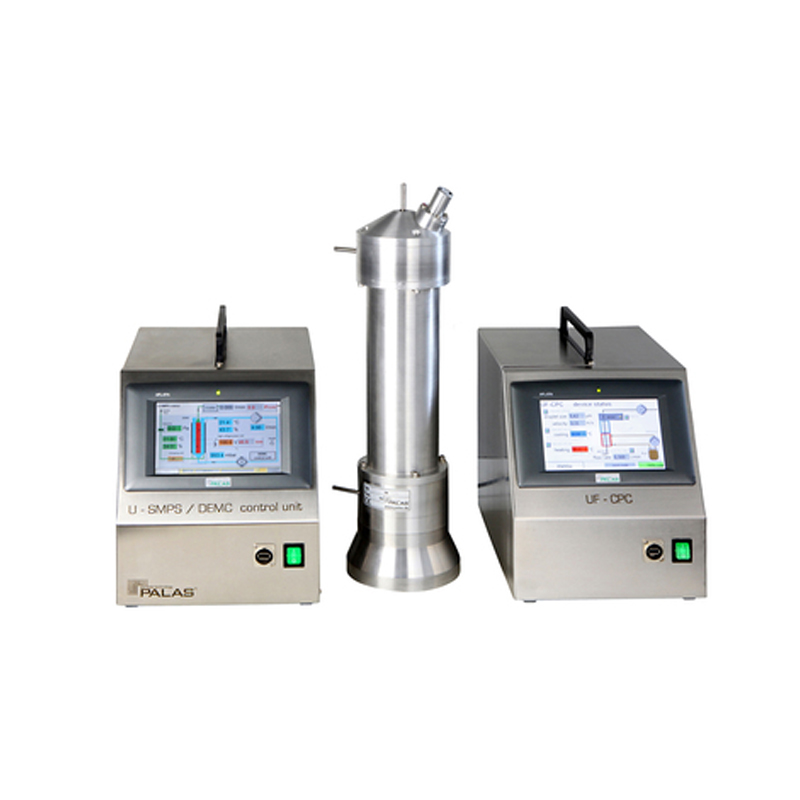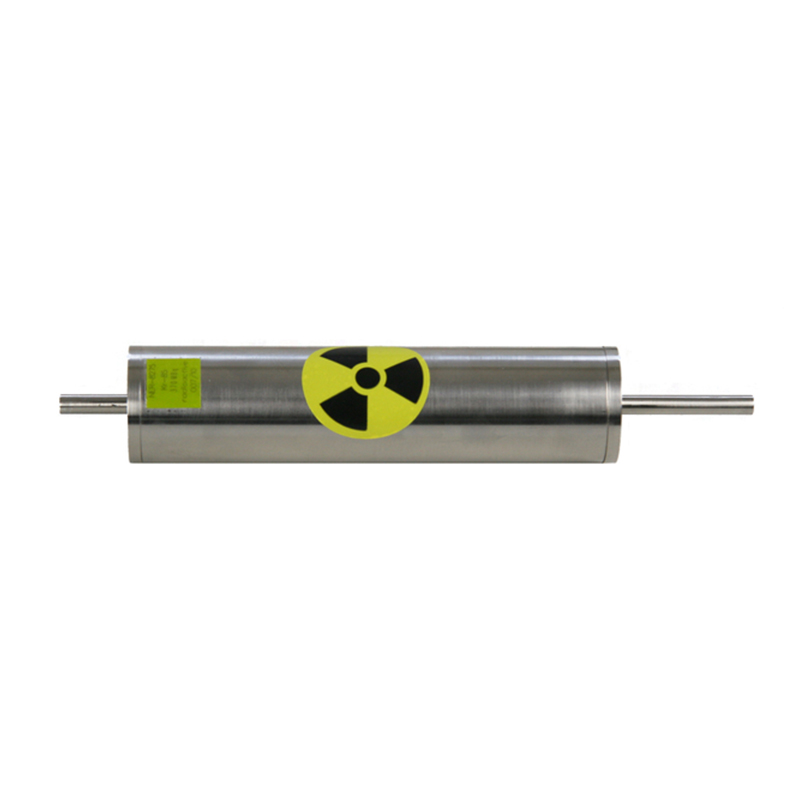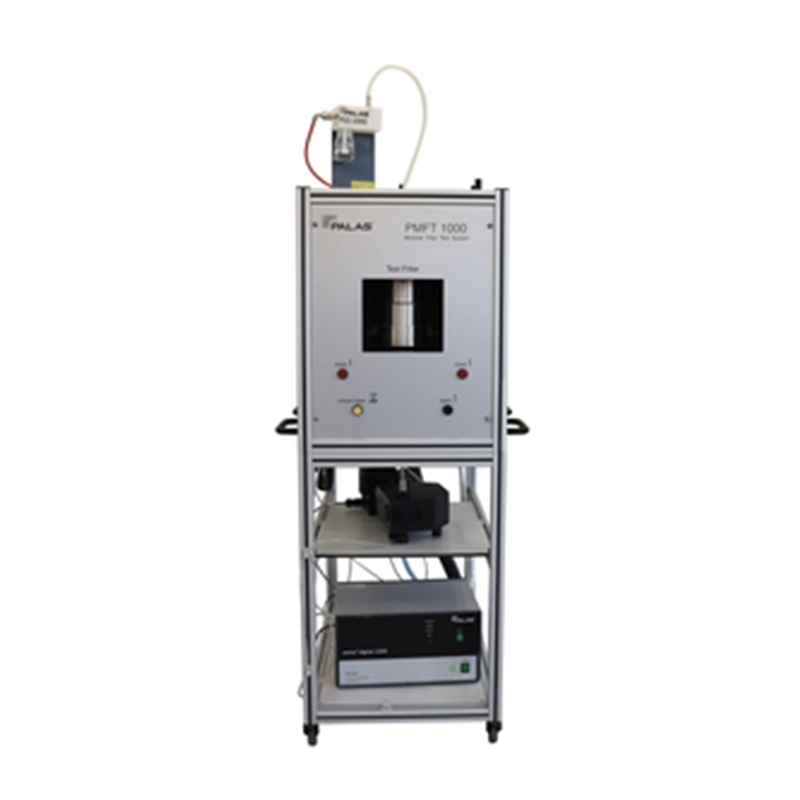Description

Fig. 1: U-SMPS 2050 X / 2100 X / 2200 X
The Palas® universal scanning mobility particle sizer (U-SMPS) is available in two versions. The long classifying column (2050 X / 2100 X / 2200 X model variations) is able to reliably determine particle size distributions of 8 to 1,200 nm. A soft X-ray source as neutralizer is already integrated (see figure 1). The advantage instead of a radioactive neutralization (for example with Kr-85) is that there is no need in following requirements during the transportation.
The Palas® U-SMPS system includes a classifier [defined in ISO 15900 as a differential electrical mobility classifier (DEMC) also known as a differential mobility analyzer (DMA)], in which aerosol particles are selected according to their electrical mobility and passed to the outlet.
These particles are then counted by a condensation particle counter (e.g. Palas® UF-CPC). The three available UF-CPC models enable optimal single particle counting in various concentration ranges. Prof. Wiedensohler (IfT Leipzig, Germany) developed the algorithm used by Palas® for inversion of the measured data to yield the particle size distribution for the U-SMPS.
The U-SMPS is operated using a graphical user interface on a touch screen. A single particle distribution scan can be performed in as few as 30 seconds or in up to 64 size channels per decade, during which the voltage in the DEMC classifier is varied continuously, resulting in higher count statistics per size channel. The integrated data logger allows linear and logarithmic display of the measured values on the device itself. The enclosed evaluation software provides various data evaluation (extensive statistics and averaging) and export capabilities.
The U-SMPS is typically operated as a stand‐alone device, but can also be connected to a computer or network using various interfaces (USB, LAN, WLAN, RS-232/485). The Palas® U-SMPS universally supports DMAs, CPCs, and aerosol electrometers from other manufacturers.
Accurate size determination and reliable performance of the U-SMPS are extremely important especially for calibrations. All components are required to pass strict quality assurance testing and are assembled in‐house.
Figure 2 presents the principle of operation of the U-SMPS:
The aerosol is conditioned before it enters the classifier (DEMC column). An optional dryer (e.g. silica gel, Nafion) removes moisture from the particles. A bipolar neutralizer (XRC 049) is used to ensure a defined charge distribution of the aerosol. An impactor at the inlet of the DEMC is required in order to remove particles larger than the classifier size range.

Fig. 2: Principle of operation of the universal scanning mobility particle sizer (U-SMPS)
The aerosol is then directed into the DEMC column via the inlet. The aerosol flow along the outer electrode is carefully combined here with a sheath air flow. It is important to avoid any turbulence here in order to ensure laminar flow. The surfaces of the electrodes must be of extremely high quality with respect to smoothness and tolerances.
This sheath air is a dry, particle-free carrier gas (typically air) with a higher volume than the aerosol that is continuously circulated in a closed loop. The sheath air to sample air volume ratio defines the transfer function and thus the resolution capacity of the size classifier.
A radially symmetric electric field is generated between the inner and outer electrode by applying voltage. The inner electrode is positively charged with a small slit at the end. By balancing the electrical force on each particle with its aerodynamic drag force in the electrical field, negatively charged particles are diverted to the positive electrode. Depending on their electrical mobility, some of the particles pass through the slit and exit the DEMC.
In operation, the voltage and thus the electrical field change continuously. As a result, particles with varying mobility exit the DEMC and are measured consecutively by a nanoparticle counter, such as a condensation particle counter (e.g. Palas® UF-CPC).
Software that has been tested under practical conditions provides special benefits for combining the data (voltage, particle number, etc.) and obtaining a particle size distribution, as shown in Figure 3.

Fig. 3: Particle size distributions of an aerosol generated by the Palas® DNP 3000 particle generator
User interface and software
Based on continuous customer feedback, the user interface and software have been designed for intuitive operation and real-time control and display of measurement data and parameters.
In addition, the software provides data management with the integrated data logger, sophisticated export capabilities, and network support. The measured data are able to be displayed and evaluated with many available options.
Available systems
The document below presents the various combinations of the DEMC with the counters available from Palas®. Most DMAs, CPCs, and aerosol electrometers from other manufacturers are able to be used as components of the U-SMPS system.




